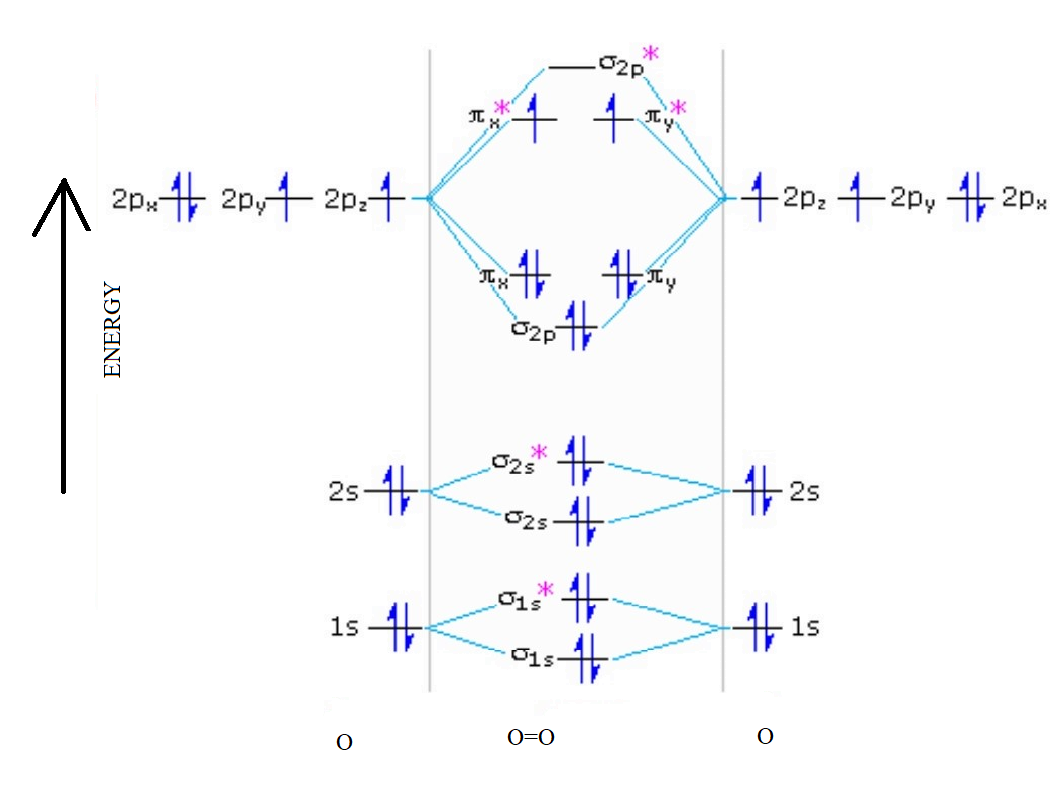Question
Question: Explain the formation of \({O_2}\) molecule using molecular orbital theory....
Explain the formation of O2 molecule using molecular orbital theory.
Solution
Draw molecular orbital diagram for oxygen molecule. Then, count the number of electrons in bonding molecular orbital and antibonding molecular orbital. After that count the bond order by using the following formula.
Bond Order = 2Number of electrons in bonding - Number of electrons in antibonding
The bond order will tell us the number of bonds that will be formed between two atoms of oxygen molecules.
Complete step by step solution:
The molecular orbital theory is a widely accepted theory for describing the electronic structure of molecules.
The formation of oxygen molecule can be given as –
We know that Oxygen has atomic number = 8. Thus, the electronic configuration for an atom of oxygen in the ground state can be given as –
1s22s22p4
One atom of oxygen has 8 electrons. Thus, two atoms will possess 16 electrons i.e. Oxygen molecules will have 16 electrons.
The molecular orbital diagram of an Oxygen molecule is as –

From the diagram, the electronic configuration of oxygen molecule can be written as -
O2 :- σ1s2σ∗1s2σ2s2σ∗2s2σ2p2Π2px2Π2py2Π∗2px1Π∗2py1
Now, we can calculate the bond order.
We know the formula for bond order is:-
Bond Order = 2Number of electrons in bonding - Number of electrons in antibonding
Thus, Bond Order = 210−6
Bond Order =2
Thus, the oxygen molecule has two bonds. i.e., one is σbond and one Π bond.
The two electrons in Π∗2px1 and Π∗2py1 orbitals are unpaired. So, the oxygen molecule is paramagnetic in nature due to the presence of these two unpaired electrons.
Note: There are two types of molecular orbital diagrams. The rest of the diagram is the same. The change occurs in two at the point of the splitting of p- orbitals. This should be taken care of so that we choose the right splitting.
